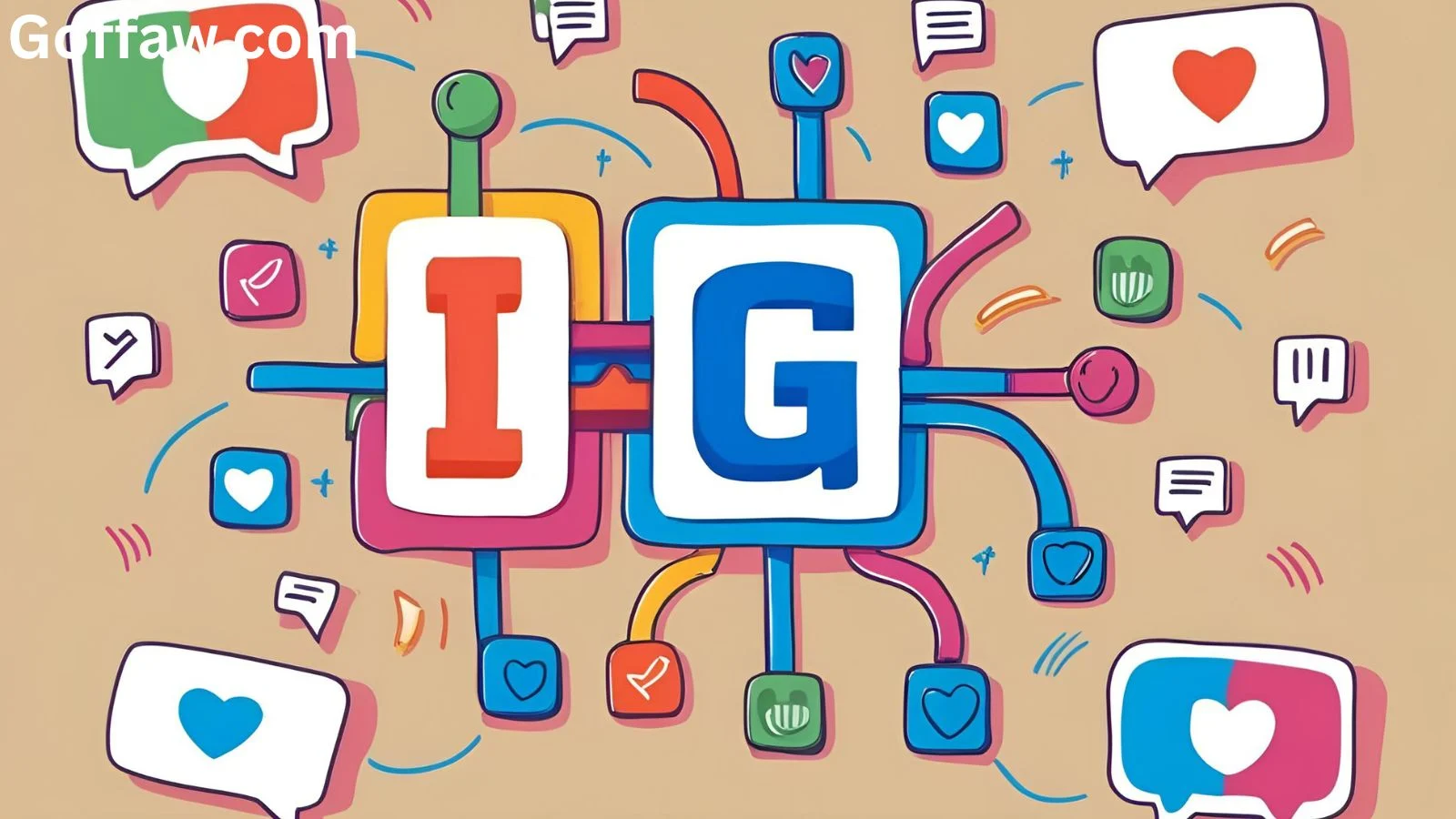In the world of digital communication, acronyms and shorthand expressions have become part of our everyday vocabulary.
One abbreviation that’s frequently used across social media, text messages, and chats is “IG.” Whether you’re scrolling through Instagram captions, responding to texts, or engaging in online discussions, chances are you’ve encountered “IG” more than once.
But what exactly does “IG” mean in text, and how can it be interpreted in different contexts? Is it just short for Instagram? Or is there more to it?
In this complete guide, we’ll break down the true meaning of IG, explore its different interpretations, explain how tone and context affect its usage, and provide you with 11 well-crafted alternatives—from polite to professional to playful.
Let’s dive into everything you need to know about the abbreviation IG so you can use it confidently and correctly.
What Does IG Mean in Text?
At its core, “IG” is a versatile acronym. Depending on the context, it can stand for:
- Instagram – A reference to the social media platform.
- I guess – A casual way of expressing uncertainty or tentative agreement.
- Less commonly, it can stand for things like “Ignorant,” “In-game,” or even “Information Governance”, especially in technical or industry-specific settings.
But in day-to-day texting and online chats, IG most often means either “Instagram” or “I guess.” Understanding which meaning is intended depends entirely on the tone, context, and the relationship between the people communicating.
Let’s break down each major meaning and how to use it effectively.
1. IG as “Instagram” 📱
This is probably the most recognizable use of “IG.” When someone says “IG” in a message like:
- “Check it out on my IG.”
- “Follow me on IG.”
- “Did you see her post on IG last night?”
…it’s clear they’re referring to Instagram, the massively popular photo and video-sharing app.
In this case, “IG” is used as a shorthand to save time or space, especially in informal texting or social media bios. It’s common across all age groups, particularly younger users who are more active on platforms like Instagram.
✅ Best used when: Talking about social media, promoting your profile, or discussing content posted on Instagram.
2. IG as “I Guess” 🤷♀️
When used to mean “I guess,” IG reflects uncertainty, indifference, or mild agreement. For example:
- “IG I’ll come to the party.”
- “It’s not that great, IG.”
- “IG you’re right.”
Here, IG isn’t about social media—it’s a casual, slightly vague way to show that the speaker isn’t fully committed to what they’re saying.
This usage can change in tone depending on punctuation and context.
Examples:
- “IG.” (Short and clipped—might signal annoyance or reluctance.)
- “IG 😊” (Tone becomes softer or more agreeable.)
- “IG??” (Could indicate confusion or sarcasm.)
✅ Best used when: You want to express tentative agreement or are unsure about something in a casual conversation.
Understanding Tone and Nuance with “IG”
Because IG is informal, it’s essential to read the tone carefully. It can mean genuine uncertainty, passive acceptance, or even mild sarcasm, depending on how it’s delivered.
For instance:
- “IG” in a group chat might suggest you’re just going along with what others want.
- “IG” in a one-on-one chat with someone you know well could mean you’re not feeling enthusiastic but don’t want to say no outright.
- “IG” with a shrug emoji (🤷) might add a layer of nonchalance.
That’s where having polite, professional, or playful alternatives becomes helpful—especially when you want to be clearer, kinder, or more intentional with your tone.
11 Polite, Professional, and Casual Alternatives to “IG” (I Guess)
When you’re not sure whether “IG” sounds too vague or informal, consider using one of these carefully chosen alternatives instead.
Each one is categorized by tone and includes usage examples so you can choose the best one for your situation.
1. “I suppose so.”
Tone: Neutral to polite
This is a gentle and polite alternative that suggests slight hesitation without sounding dismissive.
Example:
“I suppose so. We can go with that plan if everyone agrees.”
2. “That sounds reasonable.”
Tone: Professional and agreeable
A more formal and agreeable response, suitable for work emails or discussions.
Example:
“That sounds reasonable. Let’s move forward with it.”
3. “I’m okay with that.”
Tone: Friendly and direct
Shows willingness to agree, without enthusiasm or disinterest.
Example:
“I’m okay with that. Let’s meet at 3 p.m.”
4. “If you think that’s best.”
Tone: Polite and collaborative
Gives space for the other person’s decision, while softly agreeing.
Example:
“If you think that’s best, I’ll support it.”
5. “Fair enough.”
Tone: Casual and accepting
Used when you acknowledge someone else’s point, even if you’re not fully convinced.
Example:
“Fair enough. I see where you’re coming from.”
6. “I’m not sure, but okay.”
Tone: Honest and cooperative
Adds a touch of honesty while still going along with the suggestion.
Example:
“I’m not sure, but okay—we can try it that way.”
7. “I’ll go along with it.”
Tone: Lighthearted and cooperative
Implies willing participation, even if it wasn’t your idea.
Example:
“I’ll go along with it. Let’s see how it turns out.”
8. “Alright, let’s give it a shot.”
Tone: Encouraging and casual
Adds a positive spin to tentative agreement.
Example:
“Alright, let’s give it a shot and see how it goes.”
9. “If that’s what you prefer.”
Tone: Respectful and deferential
Shows that you’re prioritizing the other person’s preference.
Example:
“If that’s what you prefer, I’m happy to do it your way.”
10. “Okay, I can live with that.”
Tone: Easygoing and casual
A playful way to say you’re fine with the outcome, even if it’s not ideal.
Example:
“Okay, I can live with that. It’s not a big deal.”
11. “Sure, why not?”
Tone: Fun and relaxed
Suggests spontaneity and mild curiosity—good for light-hearted conversations.
Example:
“Sure, why not? It might be fun.”
Why It’s Important to Choose the Right Alternative to “IG”
Though “IG” might seem harmless, using it in the wrong context can create misunderstandings or make you appear disinterested. That’s especially true in:
- Professional settings (emails, group chats with colleagues)
- Serious personal discussions (plans, commitments)
- Academic environments (project coordination, peer reviews)
Choosing a more thoughtful alternative ensures you come across as considerate, attentive, and respectful. Plus, it avoids any tone confusion or accidental sarcasm that “IG” can sometimes imply.
When to Use “IG” and When to Avoid It
✅ Use “IG” when:
- You’re texting with close friends.
- You’re replying informally in a casual group chat.
- You want to express mild agreement or indecision without overthinking it.
🚫 Avoid “IG” when:
- You’re emailing a teacher, boss, or client.
- You’re discussing something serious or sensitive.
- You want to be seen as confident or decisive.
Remember: Every message you send reflects your tone and intent. Be deliberate in how you use abbreviations like “IG,” especially in professional or high-stakes situations.
Quick Tip: How to Tell What “IG” Means in a Sentence
Ask yourself these two questions:
- Is the sentence about social media?
→ If yes, “IG” probably means Instagram. - Is the sentence vague, unsure, or responding to a suggestion?
→ If yes, “IG” most likely means I guess.
If you’re ever unsure, it’s always safer to spell it out clearly.
Final Thoughts:
The abbreviation “IG” is short, simple, and flexible, but its meaning shifts depending on where and how you use it.
Whether it’s a shortcut to say Instagram or I guess, knowing how it functions allows you to communicate with clarity and purpose.
By exploring thoughtful alternatives, you can adapt your tone and expression to suit the moment—whether you’re texting a friend, writing a professional email, or having a nuanced conversation.
Words matter—even short ones like “IG.” Use them wisely. 😊




